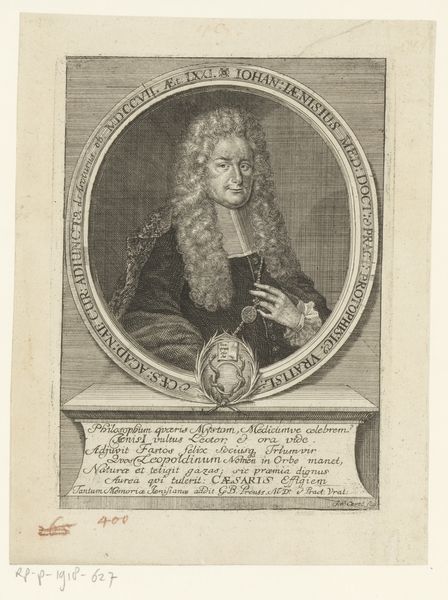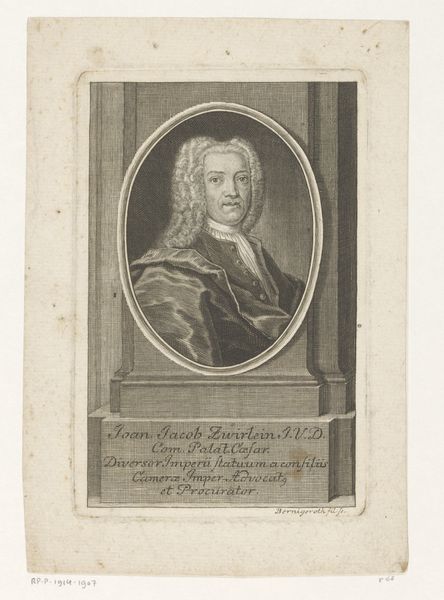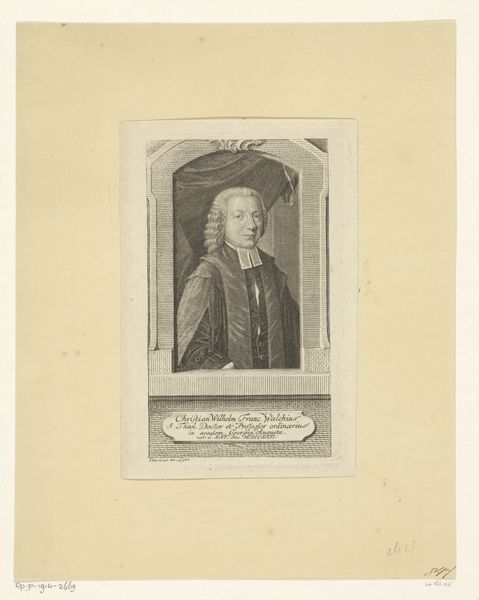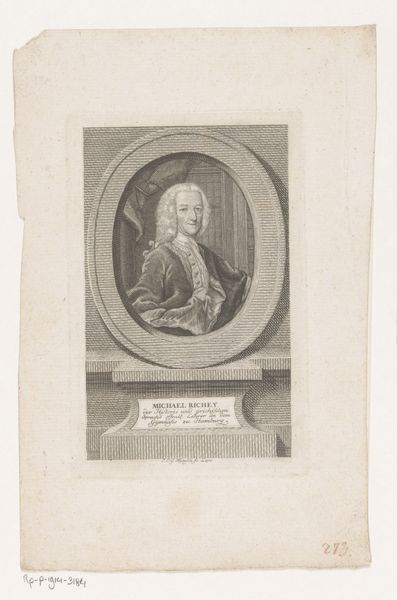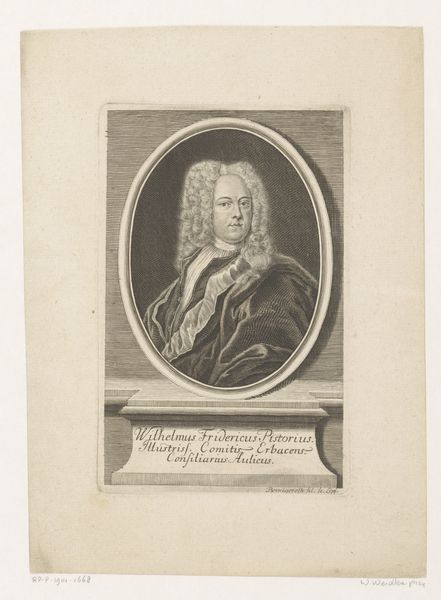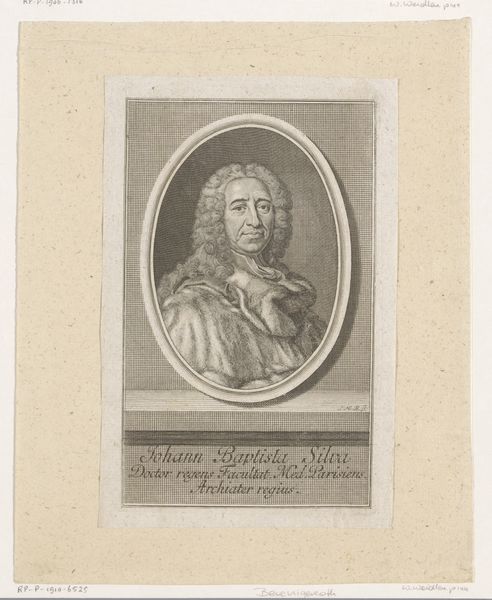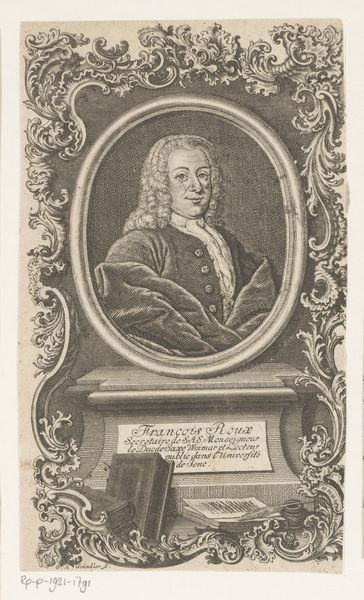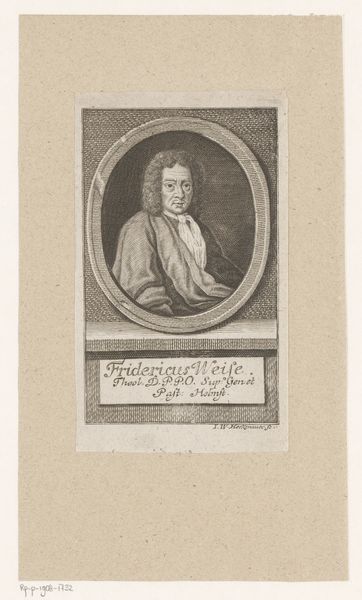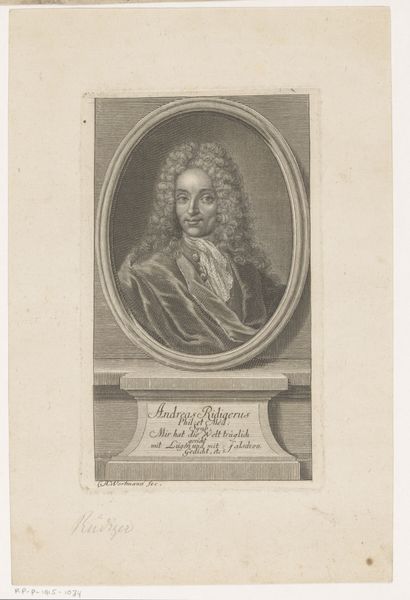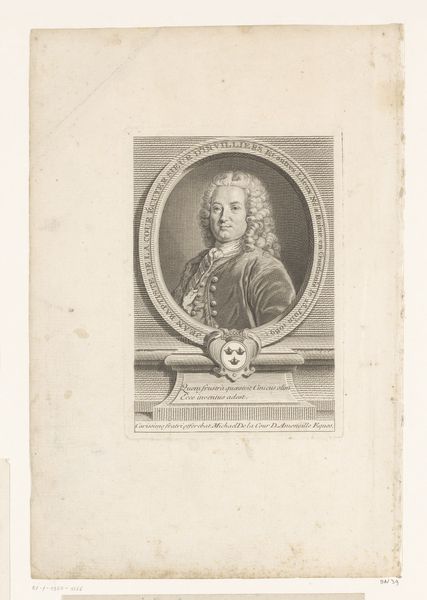
engraving
#
baroque
#
history-painting
#
engraving
Dimensions: height 165 mm, width 97 mm
Copyright: Rijks Museum: Open Domain
Curator: Welcome. We're looking at Andreas Nunzer's engraving, "Portret van Jean-Philippe Baratier," dating from somewhere between 1700 and 1749. It’s currently held in the Rijksmuseum. Editor: Immediately, I’m struck by the overwhelming Baroque sensibility, a kind of innocent drama rendered with crisp, clean lines. Despite being an engraving, it almost has the lushness of oil paint, with all the attention given to the details in his costume and hair. Curator: Absolutely. Notice how the artist contrasts the oval portrait with the rectangular frame beneath. This is a compositional choice to emphasize Baratier as distinct from the ornate lettering below him. He's presented as a refined gentleman. Editor: Yes, there is the image of this particular man framed, but underneath, and literally supporting him, is the inscribed text, like some sort of prophecy. Baratier as David? Conquering giants through wisdom? This suggests an identity that far surpasses any particularity of the image and moves into a level of myth and legend. Curator: An interesting point. Consider the semiotic function of the text panel, though. The inscription, in Latin, elevates the sitter beyond a mere individual; the text functions as an augmentation to his persona, reinforcing his erudition and prestige through classical association. The artist used calculated geometric forms for the placement and framing to create this overall feeling. Editor: But there's more to it. David, despite being royalty, is an outsider—much like Baratier, born into a French family but educated and employed in Germany, so an insider/outsider, a David taking on the establishment, perhaps? Curator: It's a persuasive reading, rooted in cultural context and symbolism. You're layering interpretive frameworks upon the image, allowing for deeper engagement. But consider what might be lost in reading biographical detail as a direct correlation to Nunzer’s intent. We have to be careful of our reading versus the composition alone. Editor: Fair enough, although for me the allure of the visual is found in its resonance with broader stories. Understanding such symbolic use within a historical context can only further enrich our reading, adding layers of psychological understanding, giving a new power to this one image of this one person. Curator: I concur. There's certainly enough to be gleaned from the artist’s choice of composition and representational symbolism for prolonged discussions. Editor: Absolutely! It offers a lot for a seemingly simple portrait, doesn’t it?
Comments
No comments
Be the first to comment and join the conversation on the ultimate creative platform.
